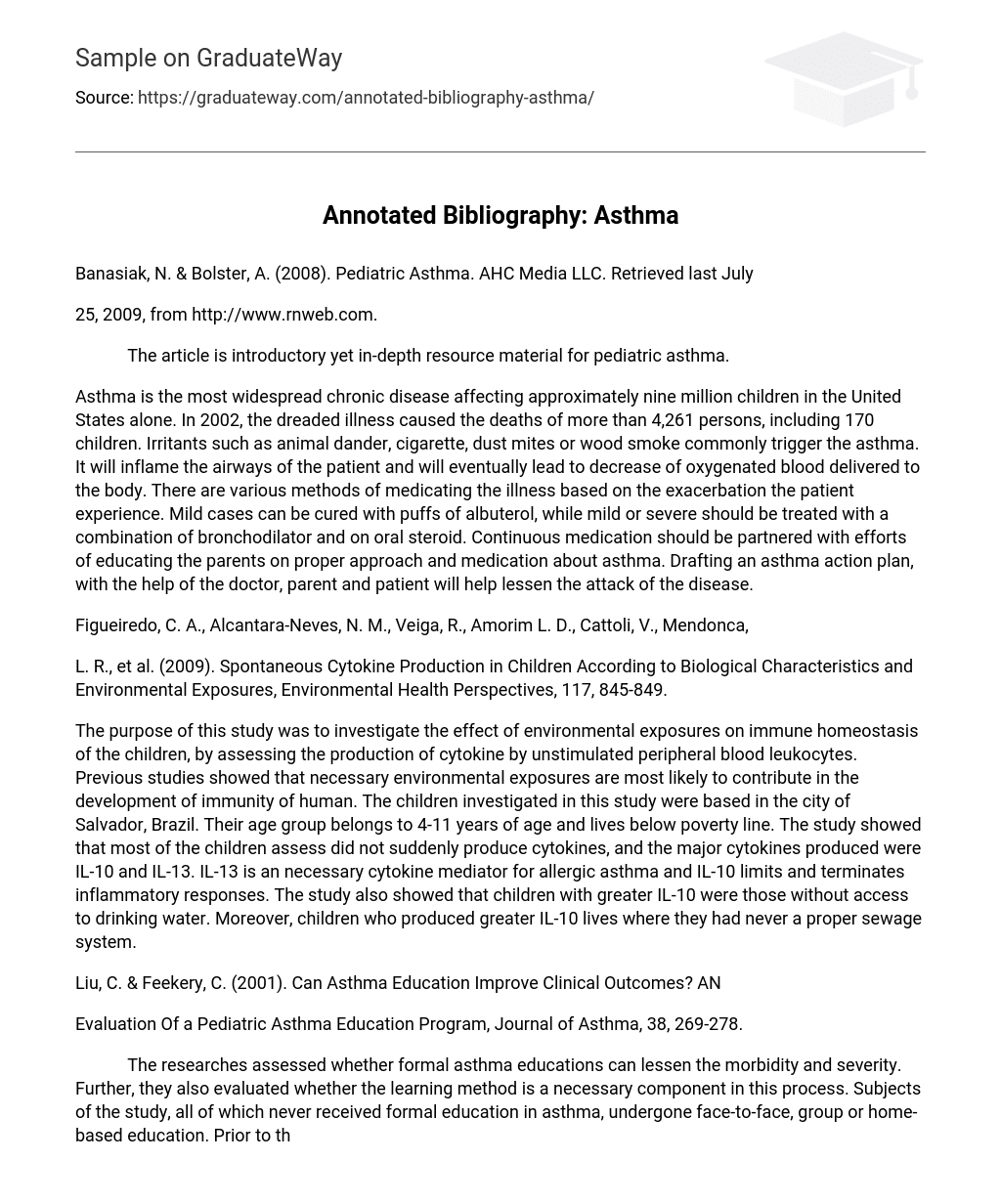Banasiak, N. & Bolster, A. (2008). Pediatric Asthma. AHC Media LLC. Retrieved last July
25, 2009, from http://www.rnweb.com.
The article is introductory yet in-depth resource material for pediatric asthma.
Asthma is the most widespread chronic disease affecting approximately nine million children in the United States alone. In 2002, the dreaded illness caused the deaths of more than 4,261 persons, including 170 children. Irritants such as animal dander, cigarette, dust mites or wood smoke commonly trigger the asthma. It will inflame the airways of the patient and will eventually lead to decrease of oxygenated blood delivered to the body. There are various methods of medicating the illness based on the exacerbation the patient experience. Mild cases can be cured with puffs of albuterol, while mild or severe should be treated with a combination of bronchodilator and on oral steroid. Continuous medication should be partnered with efforts of educating the parents on proper approach and medication about asthma. Drafting an asthma action plan, with the help of the doctor, parent and patient will help lessen the attack of the disease.
Figueiredo, C. A., Alcantara-Neves, N. M., Veiga, R., Amorim L. D., Cattoli, V., Mendonca,
L. R., et al. (2009). Spontaneous Cytokine Production in Children According to Biological Characteristics and Environmental Exposures, Environmental Health Perspectives, 117, 845-849.
The purpose of this study was to investigate the effect of environmental exposures on immune homeostasis of the children, by assessing the production of cytokine by unstimulated peripheral blood leukocytes. Previous studies showed that necessary environmental exposures are most likely to contribute in the development of immunity of human. The children investigated in this study were based in the city of Salvador, Brazil. Their age group belongs to 4-11 years of age and lives below poverty line. The study showed that most of the children assess did not suddenly produce cytokines, and the major cytokines produced were IL-10 and IL-13. IL-13 is an necessary cytokine mediator for allergic asthma and IL-10 limits and terminates inflammatory responses. The study also showed that children with greater IL-10 were those without access to drinking water. Moreover, children who produced greater IL-10 lives where they had never a proper sewage system.
Liu, C. & Feekery, C. (2001). Can Asthma Education Improve Clinical Outcomes? AN
Evaluation Of a Pediatric Asthma Education Program, Journal of Asthma, 38, 269-278.
The researches assessed whether formal asthma educations can lessen the morbidity and severity. Further, they also evaluated whether the learning method is a necessary component in this process. Subjects of the study, all of which never received formal education in asthma, undergone face-to-face, group or home-based education. Prior to this, they answered sets of questionnaires to assess their knowledge of the illness. The researchers discovered that any process of learning will increase parent asthma awareness and instantly lessen their concern and morbidity count on children. However, this positive result will only continue effectively if the learning process will be on the way of interactive and face-to-face setting. Finally, because of the result of the study, the researchers critically assessed the effectivity of mass asthma education campaigns.





